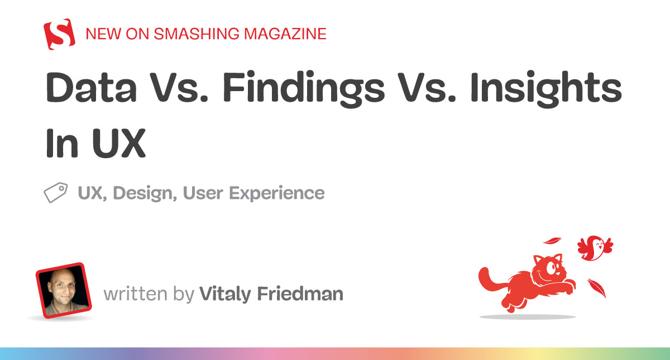Smashingmagazine
3d
339

Image Credit: Smashingmagazine
Data Vs. Findings Vs. Insights In UX
- Data, findings, and insights are often used interchangeably, but they play distinct roles in UX work.
- Data refers to raw observations, findings describe emerging patterns, and insights lead to actionable business opportunities.
- Insights are crucial in understanding and driving strategy, shaping decisions based on 'what happened,' 'why,' and 'so what.'
- Foresights are projections based on insights, and stakeholders are mostly interested in insights over raw data or findings.
- Statistical significance is less relevant in qualitative UX research, which aims to prevent mistakes and reach theoretical saturation.
- Turning findings into insights involves understanding observed behavior, identifying triggers, and assessing impact on business outcomes.
- UX professionals should focus on delivering insights and actionable recommendations rather than just presenting findings.
- Effective storytelling of UX outcomes can have a significant impact on the perception and implementation of UX work.
- To measure UX impact, practical guides like 'Measure UX & Design Impact' provide insights on shaping, measuring, and explaining UX impact on business.
- Further reading on Smashing Magazine includes articles on using psychology in data storytelling, integrations, scaling success, and embracing introversion in UX.
Read Full Article
20 Likes
For uninterrupted reading, download the app